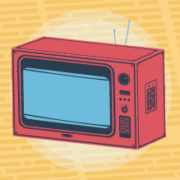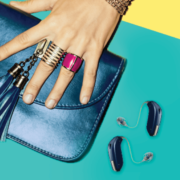The Best Hearing Health Accessories for Children
Most people associate hearing loss only with seniors, and they consider it a natural part of getting older. The reality is that it affects people of all ages. According to the World Health Organization, an estimated 34 million children live with a disabling hearing loss, and approximately 60% of cases are linked to preventable causes.
With that in mind, let’s take a look at the best hearing health accessories for children!
Earplugs
The best defense against damaging sound is always going to be ear protection. Whether it’s because of loud music, noisy vehicles, or the use of power tools around the house, reducing exposure to high-decibel sounds is the best way to prevent sudden-onset hearing loss or the exacerbation of existing hearing loss. Custom-fitted earplugs are a comfortable and convenient solution, and normalizing their use at a young age instills good hearing care habits.
BTE Hearing Aids
For a child who already has hearing loss, behind-the-ear (BTE) hearing aids are widely considered the best, style-wise. BTE aids are comfortable and durable, and many come in a variety of fun colors. Children as young as four weeks old can be fitted with a BTE aid, so they are ideal for infants born with hearing loss, and they remain the ideal hearing technology until the teenage years!
Hearing Assistive Technology
Also known as HATS, these systems are often used in conjunction with hearing aids to help a child with hearing loss hear better in the classroom. Frequency modulation systems, or FM systems, are the most common, but sound-field systems may also be used (and can help children with normal hearing as well). To inquire about implementing hearing assistive technology in the classroom, speak to the administration at your child’s school.
Hearing Aid Charms
One of the best ways to get kids excited about their technology is to turn it into something fun that expresses their individuality. There are many charms, stickers, and tube twists that can be purchased both from licensed hearing aid manufacturers and from third parties. You can customize hearing aids and truly make them part of your child’s outfit and personality. A child’s only limitation is their imagination!
Ear Suspenders
Wearing hearing aids is more challenging for children than for adults, since children are so active and can easily lose small objects. Ear suspenders are a type of stretchy headband designed to hold hearing aids firmly in place during nearly every activity. They are superior to shirt clips in that they prevent the devices from falling out. It’s a comfortable, practical solution to your child’s rambunctious lifestyle. Plus, they’re fashionable!
Caring for a child with hearing loss can be challenging, but you’re not alone. For more information about these products or to schedule a hearing consultation with our team, contact us today. We’re here to help!








 Proudly Canadian and Independently Owned and Operated
Proudly Canadian and Independently Owned and Operated 

